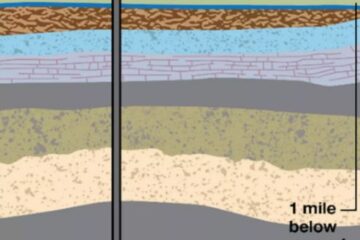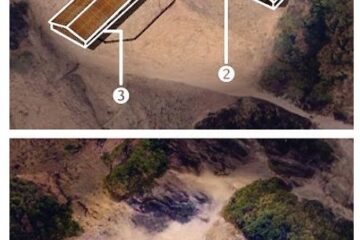Beware! These California superblooms are beautiful but treacherous
Plants like Sahara or black mustard, common in Southern California but not native to it, can strangle native flowers and pose fire danger.
Source of this article, the Los Angeles Times, May 5, 2023
Tourists and travelers driving to visit California’s superblooms this year may see some striking vistas along the way — swaths of bright yellow, perhaps, covering formerly drab hillsides.
 Before you ooh and aah, keep in mind: Some of that growth is invasive species that pose a treacherous threat. Experts say these plants can create stark and dramatic changes to the environment, altering soil chemistry and erasing native flora in some areas.
Before you ooh and aah, keep in mind: Some of that growth is invasive species that pose a treacherous threat. Experts say these plants can create stark and dramatic changes to the environment, altering soil chemistry and erasing native flora in some areas.
“In the 2017-2018 superbloom, I was down in the desert and you could see one side of the hillside … with this spectacular superbloom,” said Andrea Williams, director of biodiversity initiatives for the California Native Plant Society. “The other side was just a field of Sahara mustard.”
Plants like Sahara mustard or black mustard, which features thick bushes dotted with pleasant-looking yellow flowers, are among the species that are most common and recognizable in Southern California but not native to the region.
The plants can strangle the annual blooms of native flowers and also pose fire danger as the plants propagate quickly and widely.
Some species of invasive plants thrive under conditions that also create superblooms, namely long, wet winters like the one California just experienced.
Invasive species may “seed earlier in the year; they grow faster; they shade out the native species, and they create a layer of thatch that the native species can’t come out of,” said Isabel Baer, environmental program manager for the California Department of Fish and Wildlife’s native plants program.
“They’re also going to dry up sooner,” she said. “They’re going to dry up bigger, bushier.”
When fires come along, Baer said, the plants ignite faster — and then they reseed before the native plants have a chance to do so.
Williams said that typically, with most of the native plant life, “everything that you’re going to see that really is spectacular … is hanging out underground as seeds.”
“Very often you’ll get a cover of invasive grasses, like Mediterranean grass … that will cause there to be quick germination, and they can either crowd out the annuals” that haven’t yet sprouted or, with wide propagation and faster ignition, “cause a change in the way that fire moves through the system.”
The grasses can also kill “Joshua trees and a lot of the shrubs and the plants that are kind of holding down the fort in between the superblooms,” she said.
It does not take a big population of invasive plants to dramatically change an ecosystem and tilt the balance away from nonnative plants.
“It can be as little as 15% invasive species,” Williams said. At that point, “you really start to see some effects and it starts to cascade.”
Invasive plant species are easily spread, including by humans. Black mustard is believed to have come to California with the Spanish missionaries. The plants continue to hitch a ride — via hikers and cars.
“If you think about people who are enjoying the superbloom and they are parking off the shoulder of the road in an area that has weeds, they can actually spread these weeds and make it less likely that there’s a superbloom in the future,” Williams said.
But people can enjoy the superblooms responsibly and ensure that they sprout for future generations.
Detection and prevention are important steps in controlling the spread of invasive plant species, Williams said. Volunteering for invasive-plant removal programs is one way native-plant fans can help combat the problem.
“I never discount the persistent efforts of a few people who want to make a difference,” she said.



0 Comments